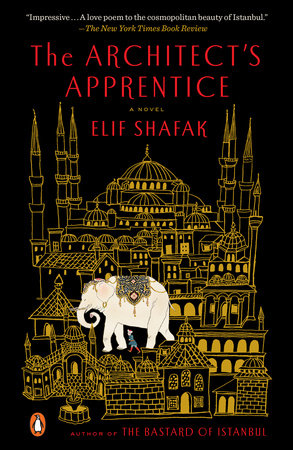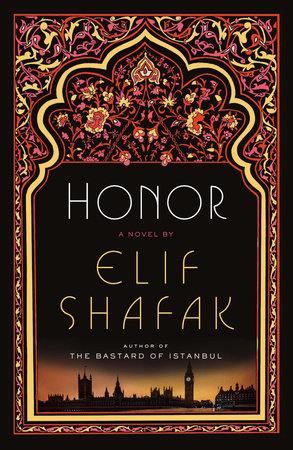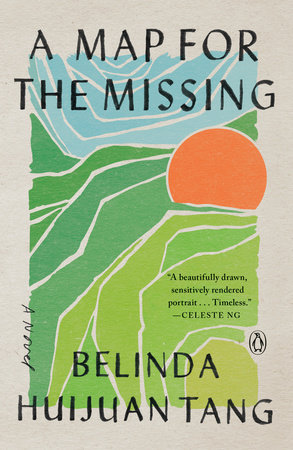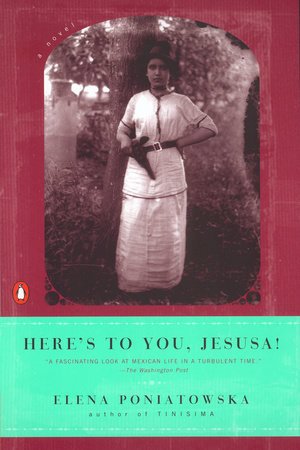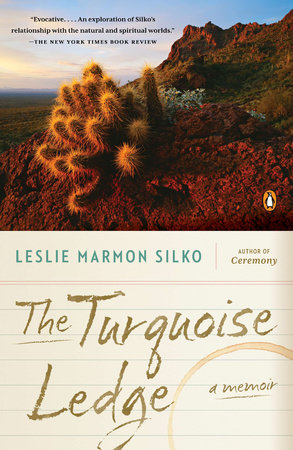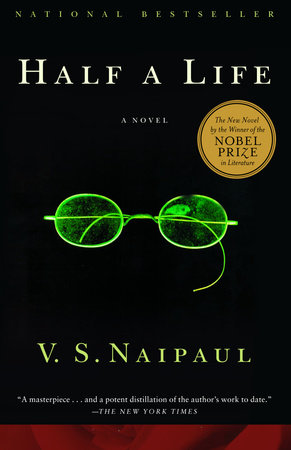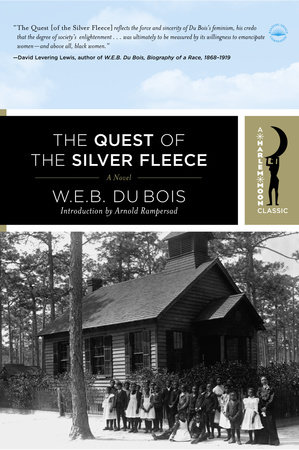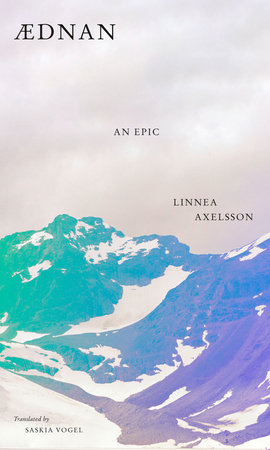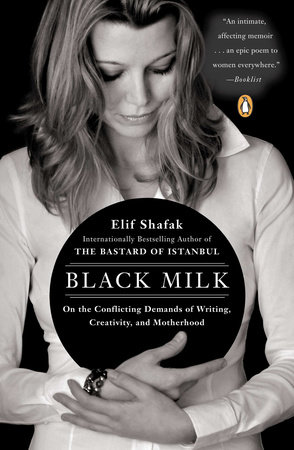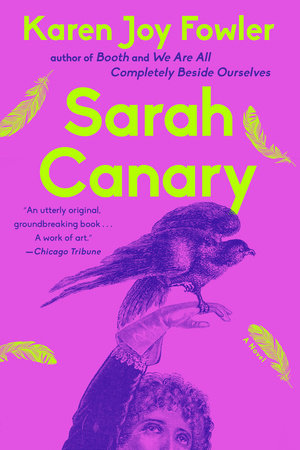1. The Architect’s Apprentice offers a stunningly complex view of Istanbul: a place of intrigue, cruelty, and suspicion, but also of extraordinary passion, beauty, and possibilities. What does Istanbul currently signify to you?
Istanbul is a she-city. And she is a difficult lover. I can neither stop loving her nor be happy with her. So I run away from her, and after a while I miss her dearly and go back, only to run away again. My bond with the city is based on this emotional pendulum. I also like to think of my writing as a drawing compass. One leg of the compass is static, based in Istanbul, inspired by the city and its history and its people. Meanwhile, the other leg draws a wide circle, roaming the world. In that sense I would like my fiction to be from “somewhere” and “everywhere” at the same time.
2. You write in your novel that Istanbul, “where forgetting was easier than remembering, never learned its lesson” (p. 242). What lessons would it most profit Istanbul to learn in our own time?
Turkey is a society of collective amnesia. Our connection with the past is full of ruptures. In general, the attitude towards history can be divided into two camps: the modernists, who have absolutely no interest in the past, and therefore possess no knowledge of it, and the anti-modernists, who romanticize the past and believe that “our ancestors could have never done anything wrong.” Both approaches are very problematic. We need a completely new understanding of history (her-story) in which there is equal room for all minorities—whether sexual, ethnic, or cultural.
3. Writing The Architect’s Apprentice has, we suspect, given you ample opportunity to reflect on the similarities and differences between authorship and architecture. How would you compare the two?
While writing this novel, I had to think carefully about the bond between authorship and architecture. They have much more in common than we tend to think. Writing a book requires a kind of architecture and design. Every work of architecture has a story behind it. Balance and beauty, space and structure, tradition (knowing the works of masters) and novelty (to innovate), and an unexpressed desire to fly in the face of mortality and to create long-lasting edifices are essential to both fields.
4. At various moments in the novel, Jahan owes his life to the intervention of Gypsies. What is it about the Roma that has engaged your interest?
The Ottomans often boasted that Istanbul was a conglomeration of seventy-two and a half ethnicities. Every time I read or heard that I wondered who that half were. It was the Gypsies. The Roma were the Other of the Other. Always mistreated, always misunderstood, belittled, persecuted. I wanted to bring them into the story. Even though Turkish official historiography makes absolutely no mention of the Roma, just like there is no mention of gays, hermaphrodites, or transvestites, they were all an equally important part of the story.
5. The writing of historical fiction presents unique challenges, in that the author must preserve some fidelity to established fact but also preserve the suppleness and imagination that are essential to good fiction. How did you go about striking the balance between truth and inventiveness in The Architect’s Apprentice?
The dance between factuality and imagination is the hardest thing to achieve while writing historical fiction. But I don’t necessarily see facts as obstacles in front of a wild imagination. Rather I see them like a trampoline we can rebound from. In order to fly higher our feet must touch the facts first. When I embark on a new novel, I do a lot of research. I read everything I can find on the period, the subject matter. I take notes, fill in notebooks. Then, and only then, do I dare to start imagining the story.
6. Speaking of balances, your novel is deeply interested in equilibriums, both personal and social. To put it another way, you write very sagely about borderlines and the blurring of those borders—between East and West, male and female, love and hate, even human and animal. Why is it important for you to continually challenge these and other distinctions?
I passionately believe that it is the job of a writer to question dualistic thinking. There are so many dichotomies that we tend to take for granted, just out of habit. Is there really a rigid dichotomy between East and West? I don’t think so. It is all in our minds, in our perceptions. Sweeping generalizations are fertile grounds where racial/ethnic stereotypes flourish. I think many writers, past and present, have a strong urge inside to render visible the invisible and make silences speak.
7. In a novel that is so much about balancing, one perceives an essential fulcrum in the character of Sinan. How much do we know about the historical figure of Sinan, and how much of his character were you forced to imagine?
Sinan is known in Turkey and throughout the Middle East as “the greatest Islamic architect.” Not many people are aware that he was born a Christian; most probably he was Armenian or Greek and interestingly he remained Christian until the age of twenty-one. Hence his basic formation was in Christianity. Afterwards he converted to Islam; the Sultans asked him to compete with the dome of Hagia Sophia and to build “bigger domes for Islam.” In my opinion Sinan did not see the dome as an instrument of religious competition. He believed that under the same invisible dome, there was “equal space for Christians, Muslims, Jews, and Zoroastrians.” I am fascinated by his architecture and his creative nature, as much as by his work ethics and personality. Today we know relatively more about him and his era, thanks to the works of historians and architects. But much of that knowledge is still confined to academic circles. Sinan deserves to be better known and better understood.
8. In a passage that reminded us strongly of the teaching of Lao-tse, you observe, “Sinan was made of flowing water. When anything blocked his course, he would flow under, around, above it, however he could; he found his way through the cracks, and kept flowing forward” (p. 224). Yet, for all his adaptability, Sinan strikes us as the most firmly principled character in your novel. What are we to make of this seeming contradiction?
I personally don’t think rigidity is a sign of strength. People who are unbending and inflexible are not necessarily powerful personalities. What is much more important is adaptability, fluidity, the capacity to adjust to new conditions and to rise to new challenges. So in my opinion people made of “flowing water” are stronger personalities than people made of solid bricks.
9. The flow of water seems to be a highly significant image for you. You express the hope that your story “will flow like water in the hearts of its readers” (p. 422). What forms do you hope this “flow” might assume?
I like this imagery, especially the meaning and philosophy behind it. The American astronomer Edwin Hubble discovered that the universe was neither static nor “given.” He showed that the universe is constantly expanding. The human being is the microcosmos, and as such, the reflection of the macrocosmos. Just like the universe, we need to make sure that our minds and our hearts are continuously expanding, changing, learning. Movement is essential.
10. It seems evident that you felt a special fondness for the “character” of Chota, the elephant your narrative endows with almost human qualities. Did you find some special pleasure in creating him?
I have to confess I loved Chota from the very beginning. I could almost watch the elephant move as the story unfolded. Elephants are marvelous creatures. We have so much to learn from them and their lives. Also, the elephant was important in a symbolic way. It represented balance, harmony, grandeur, wisdom, and memory, each of which were central in the story.
11. Chota is not the only character in the novel that cannot speak for himself. What is it that so intrigues you about silences?
Storytelling is interested in not only stories, but also the silences. I want to bring to the fore the Other and the underbelly of the Turkish society. The people who have been pushed to the periphery, the stories that have been forgotten, the truths that have been silenced. History, the way it has been told and taught in Turkey, is a very partial story. It is always about wars and victories. The few human beings who are mentioned are almost always the elite—Sultans or Shayh al-Islams. But I want to understand how it felt to be a Janissary before the night of war or an Armenian candlemaker or a Jewish silversmith or a Christian galley slave. I focus on “ordinary” people to show nobody is ordinary. Official history books are limited, partial, and biased. It is up to writers to remember the stories and characters that mainstream historiography systematically forgets/suppresses. Not to create new conflicts, but to heal old wounds.
12. Your book excels at exposing the ills that flow secondarily from the existence of a tyrannical government: the myriad cruelties, deceptions, and betrayals that emerge even in personal lives when freedom is withheld. Is an awareness of such dysfunctions especially pertinent in our time?
So many of the conflicts and clashes that we observe today in Turkey or the Middle East date back to the nineteenth century and before. In Europe and the United States, nationalism, racism, anti-Semitism, and xenophobia have not fully disappeared. History is not a bygone period. It still breathes in the present moment. The ghosts from history are with us. It is a pity that humanity has not learned much from the enormous mistakes of the past. We think that the rights we have cannot be taken away, but they can. It is important to have an awareness of that, and to endorse pluralistic democracy and the separation of powers together with minority, LGBT, and women’s rights and the freedom of speech.
13. You have said that you do not have the luxury of being apolitical. How essential do you consider political engagement to the success of a writer?
Writers coming from countries with wobbly democracies, such as Pakistan or Turkey or Russia, do not have the luxury of being apolitical. In societies where there is no full freedom of speech and no real pluralistic democracy, every subject you write about can have political repercussions. Writing about sexuality and homophobia, for instance, is also political. Even the act of writing itself can be seen as a political act. In that sense I am not an apolitical person. Also, coming from the women’s movement, I believe there is politics in the private space as well as the public space. But there is an important nuance here. Art can transcend daily, sectarian politics. The language of art is a very ancient language that speaks to our hearts. So my writing might be political in many ways, but for me as a writer my main guide is always imagination and the art of storytelling and artistic freedom.
14. You are equally accomplished as a writer of both Turkish and English. How do you decide which language to use for a given project, and, specifically, why was it important for you to write The Architect’s Apprentice in English?
I love the commute, back and forth, between English and Turkish. If we can dream in more than one language, which is something more and more people around the world are experiencing today, why can we not also write our stories, poems, novels in more than one language? I feel attached to both English and Turkish, though in completely different ways. When it comes to sorrow and melancholy, I have come to realize I find Turkish more convenient. When it comes to humor, irony, and satire, I feel more comfortable in English. For more than a decade now I have written each new novel in English first, and then had it translated into Turkish. I then take that translated text and rewrite it. A little insane! The only reason why I do it is because I love language. I love languages.
15. You provocatively write in The Architect’s Apprentice, “Every artisan and artist enters into a covenant with the divine. Have you made yours?” (p. 135) Would you like to share with us the terms of your own artistic covenant?
I am very intrigued by the process and concept of creativity. How does it work? Where does it come from? How can it be expanded and sustained? Sinan lived in a highly authoritarian society, and worked under enormous pressure, and yet he kept constructing marvelous architecture. I am inspired by people like him. Every artist, whether a believer or an agnostic or an atheist, enters into a covenant with the divine. I have a covenant too, signed long ago, then renewed and renewed again at different stages of my life.
